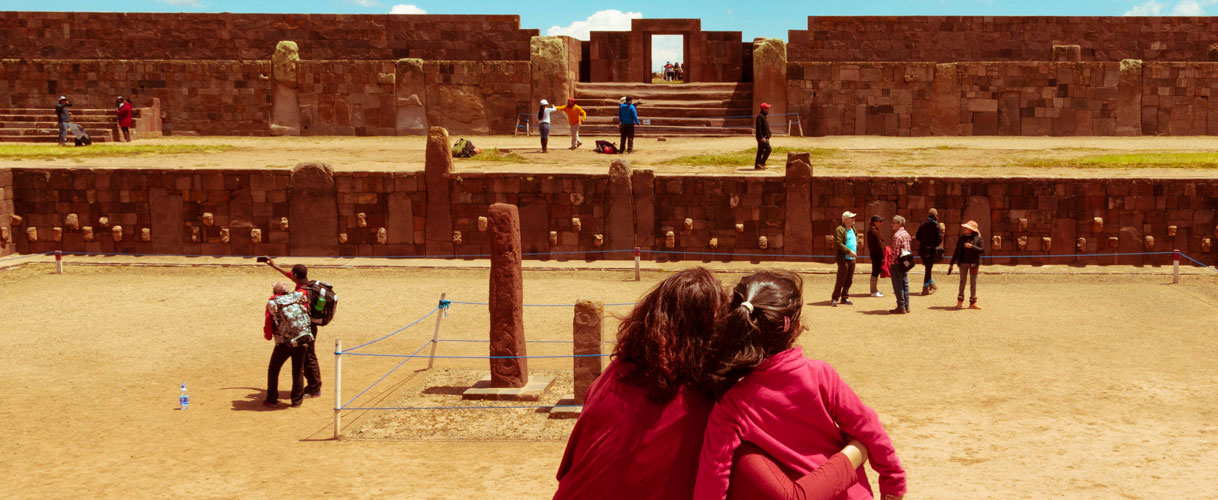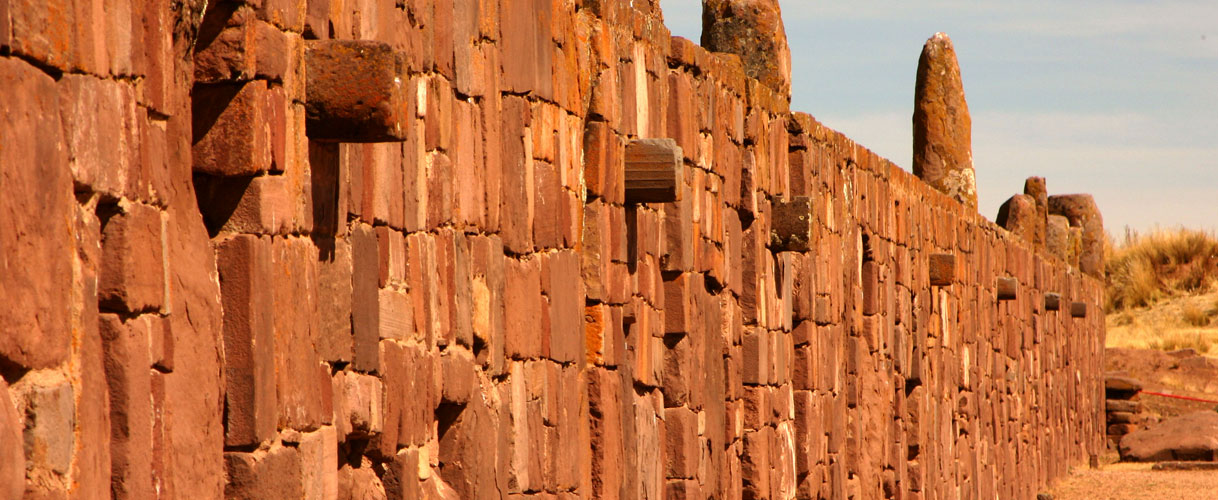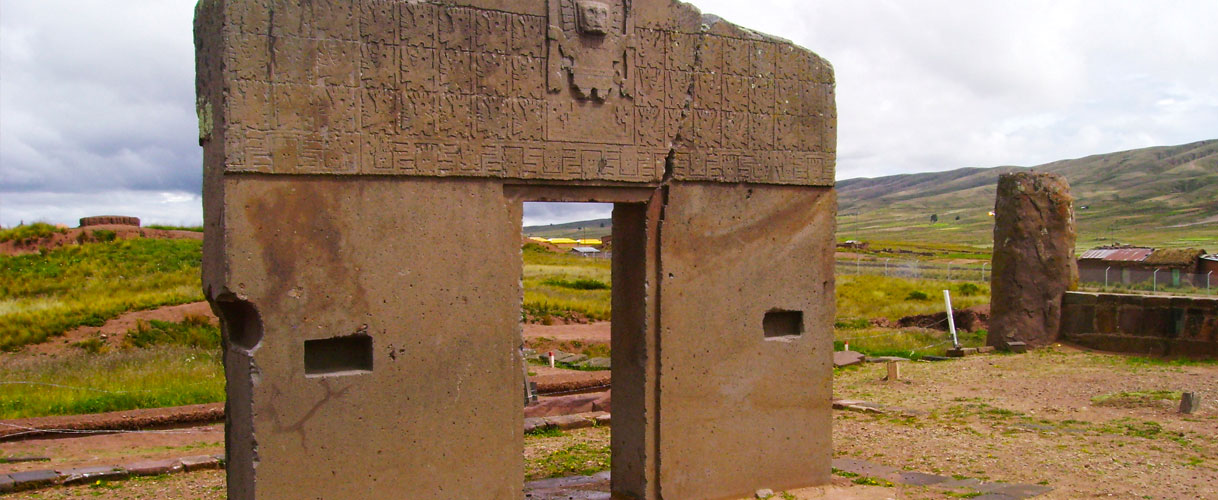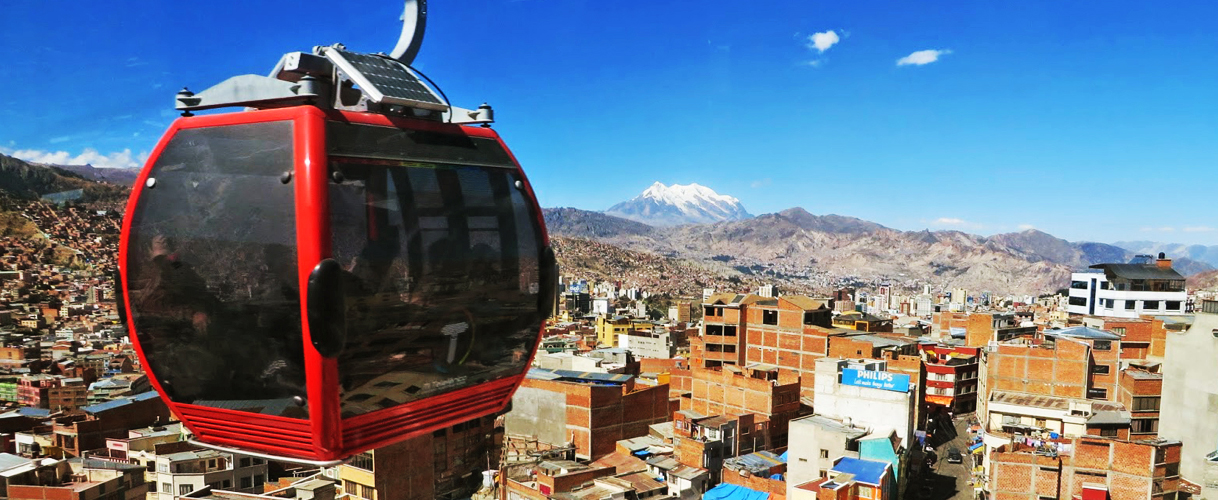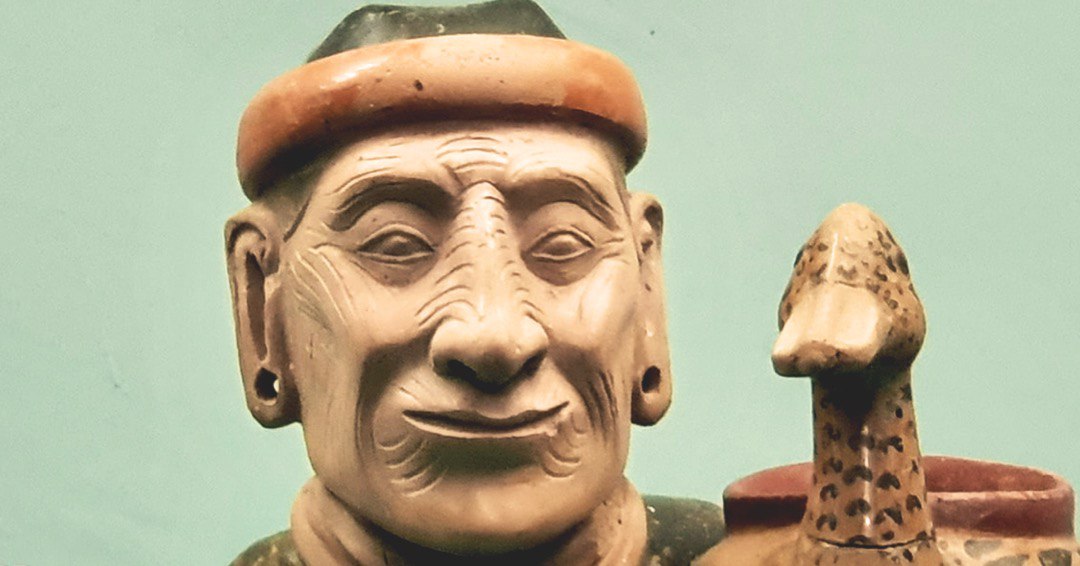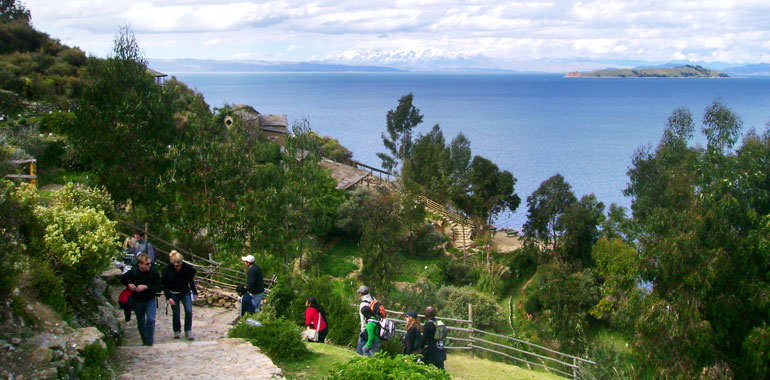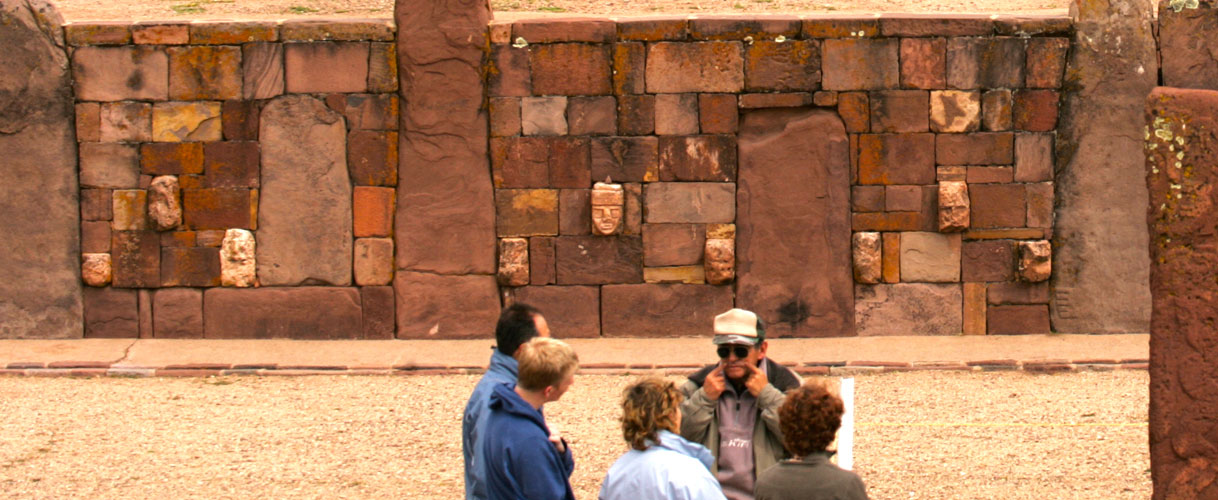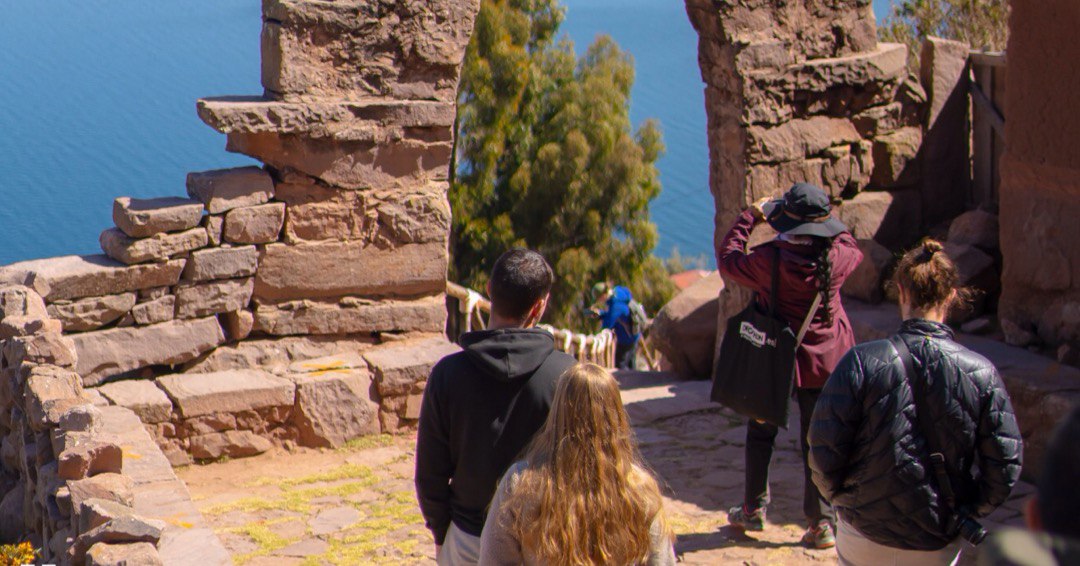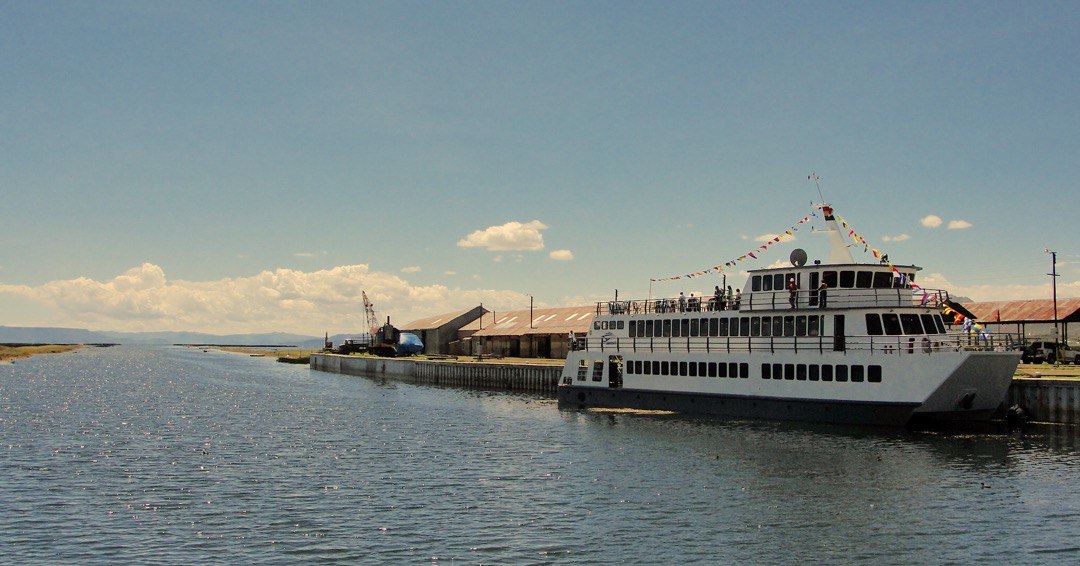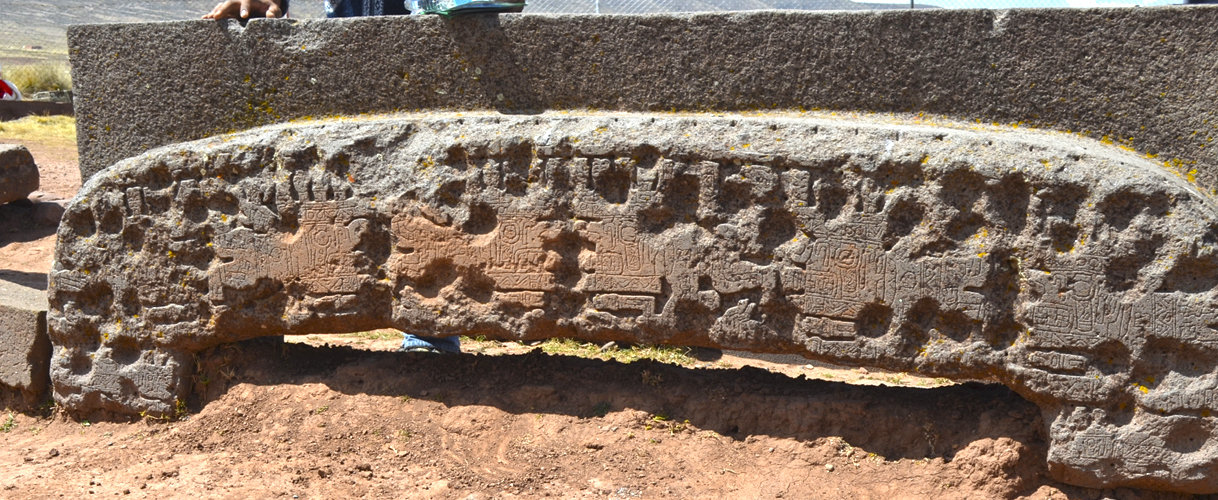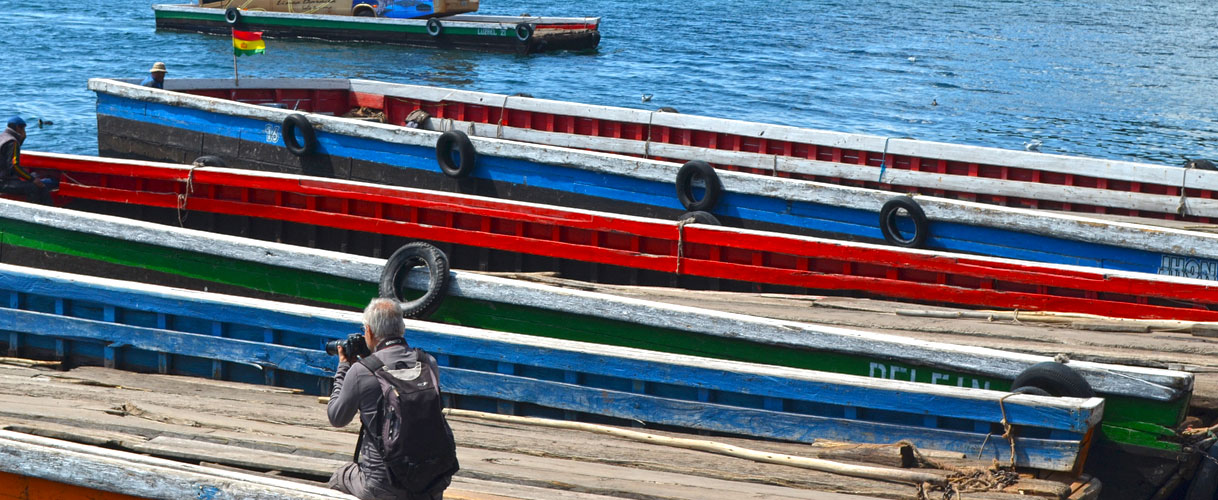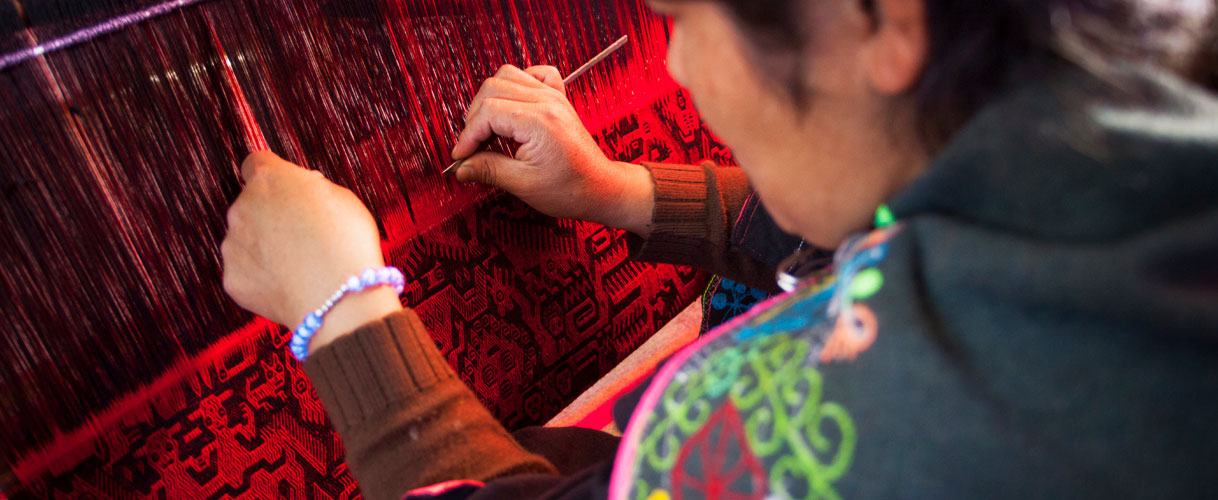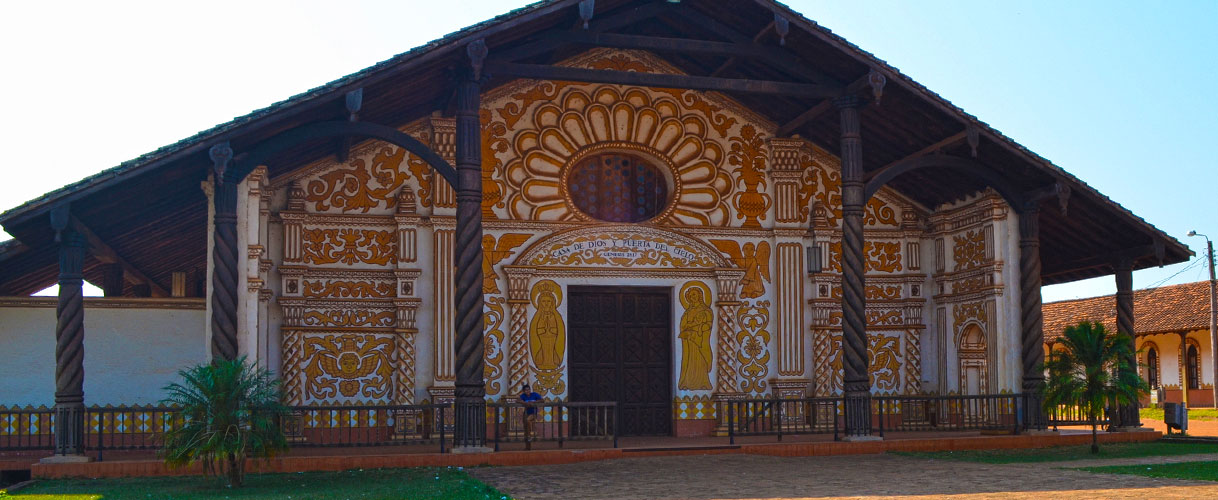Tiwanaku and La Paz City
Urban tour, archaeological sites, local food
Andean history from 1 to 4 days
DAY 1: LA PAZ - TIWANAKU - LA PAZ
At 8:00 we begin the trip that takes us across the Altiplano (High Plateau Ranges) enjoying the landscape characterized by andean products fields and small houses made of mud bricks called “adobes”. In Tiwanaku we wil learn more about the most important archaeological complex of the Bolivia.

For a first approach to this impressive culture, we will visit the local museum for an introduction about Tiwanaku’s heritage. Later we go into our journey back to more than 3500 years ago, we will visit the archaeological site whose main attraction is the “Puerta del Sol” (Sun Gate) one of the most important archaeological pieces of the continent, a megalithic gateway carved from a single block of stone.
We will also have the chance to visit some other very important ruins of this enigmatic pre-Incan culture in terms of architecture and iconography: the Temple of Kalasasaya, which is believed to be a ritual platform built using huge blocks of red sandstone, the “Templete Semi-subterraneo” and the Akapana pyramid, structures that make Tiwanaku one of the most popular places to visit in of Bolivia.

After lunch, we return to the city of El Alto, where we will embark on the Cable Car line (Teleferico) that crosses the popular 16 de Julio zone, where you can see many "Cholets" (buildings that are characterized by their bright and radiant colored facades , typical of the Andean culture).
Changing the Cable Car line we arrive at the historic center of La Paz, where we will visit the exteriors of: Plaza Murillo, the Legislative Palace, the Government Palace and the Metropolitan Cathedral of Our Lady of La Paz; the picturesque Calle Jaén and the Basilica of San Francisco. We will end our tour at the Calle de las Brujas, where you can see crafts and also elements for Andean rituals in offering to Pachamama (Mother Earth). Return to the hotel.
Optional activities:
Offering ceremony to "Pachamama" or Mother Earth, an andean tradition led by a "Yatiri" (Aymara wise man).
ABOUT THE TIWANAKU ARCHAEOLOGICAL COMPLEX
The Tiwanaku Archaeological Complex became the civic ceremonial nucleus of this metropolis, it is the most important archaeological center in Bolivia. In its period of greatest expansion it occupied an approximate area of 600 hectares.
It is currently divided into two sectors. The first grouped in the ceremonial civic center of the Pumapunku pyramid, located approximately 1km south west of the complex.
The central site occupies approximately 16 hectares, equivalent to 2% of the total surface area of Tiwanaku. The architecture of its pre-Inca temples corresponds to the classic period and greatest splendor of the Tiahuanacota culture, a period between the III and VIII centuries.
In 2000, UNESCO declared this complex as a World Cultural Heritage Site, due to its great Andean cultural wealth.
